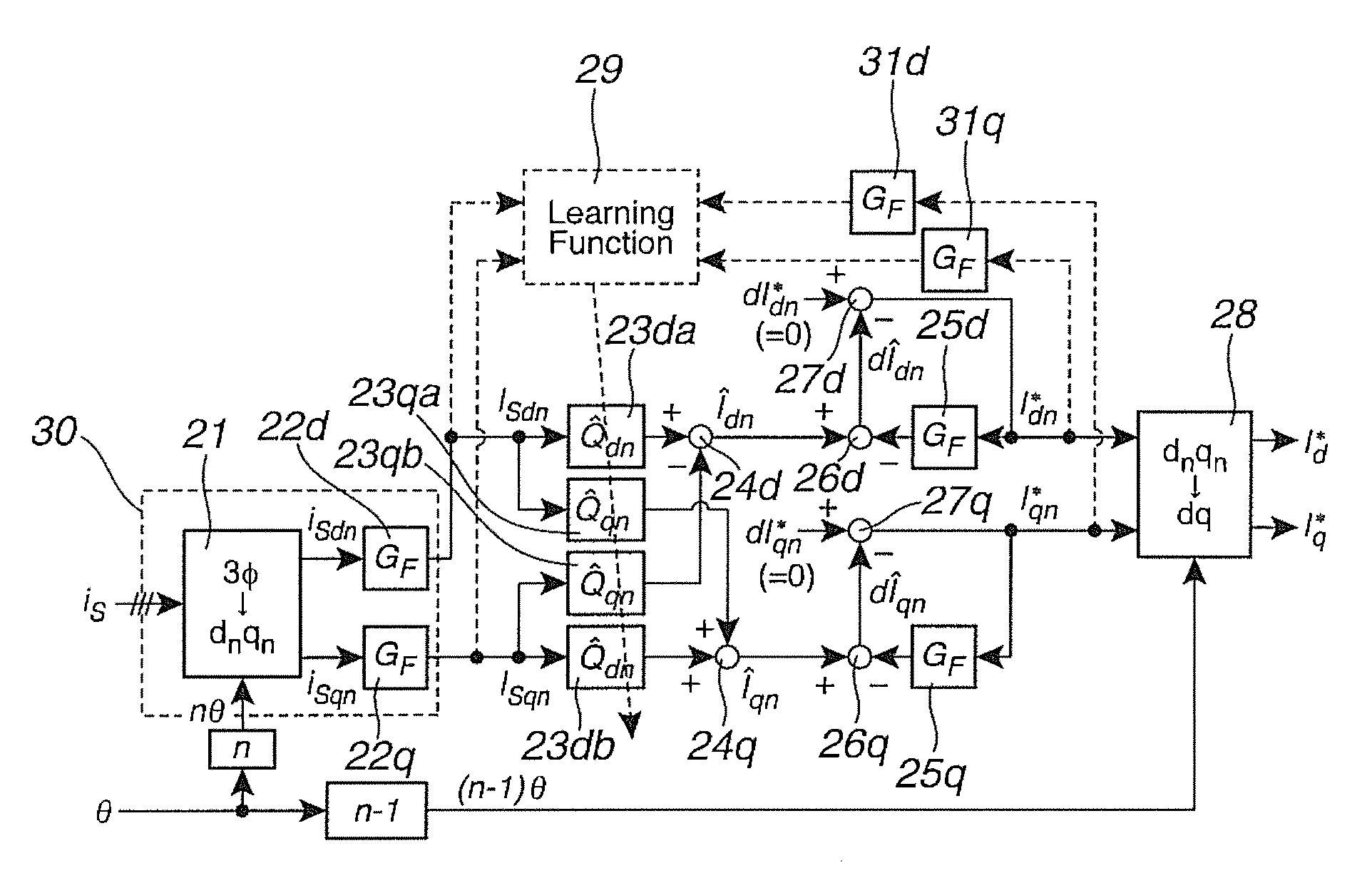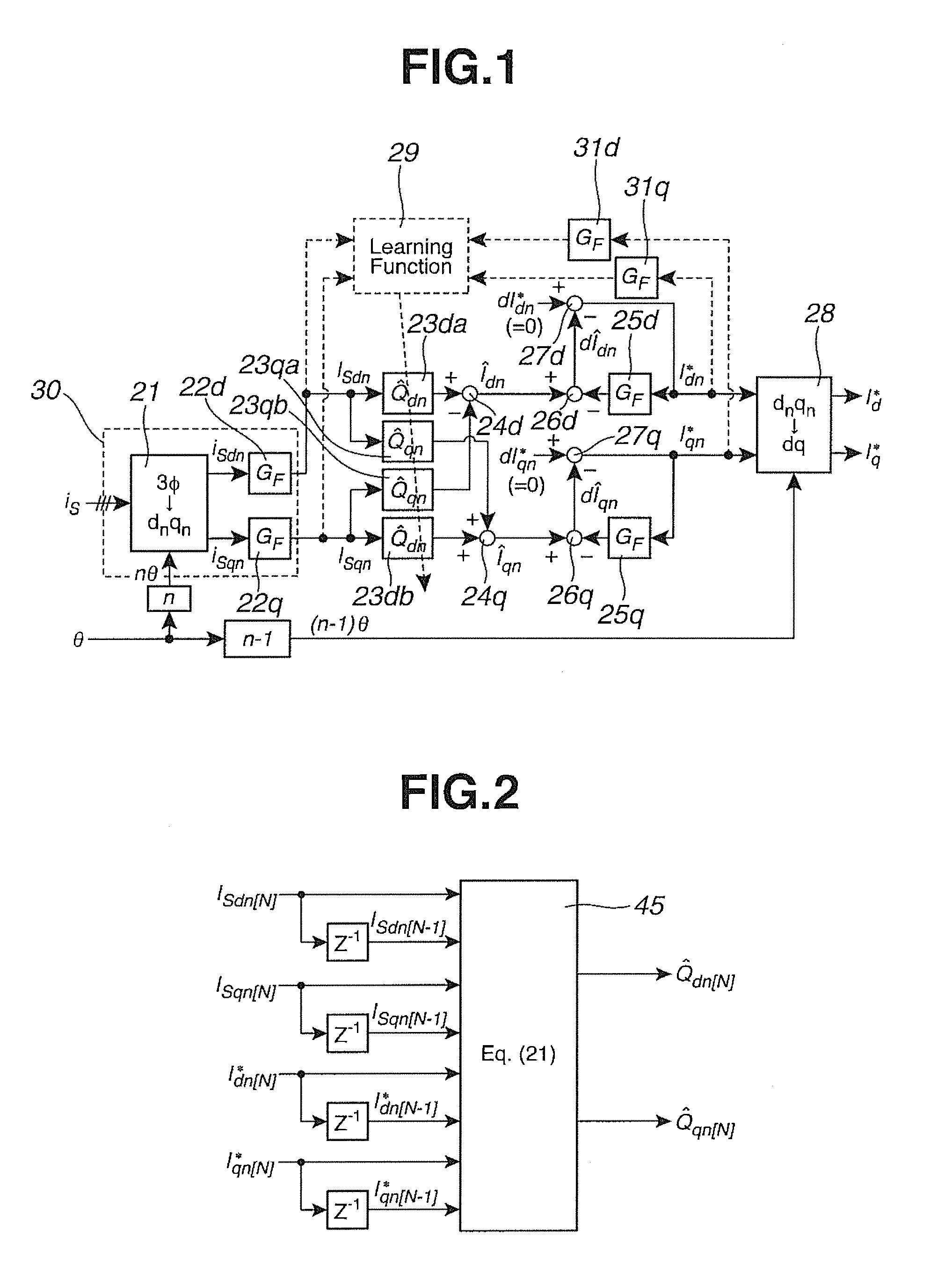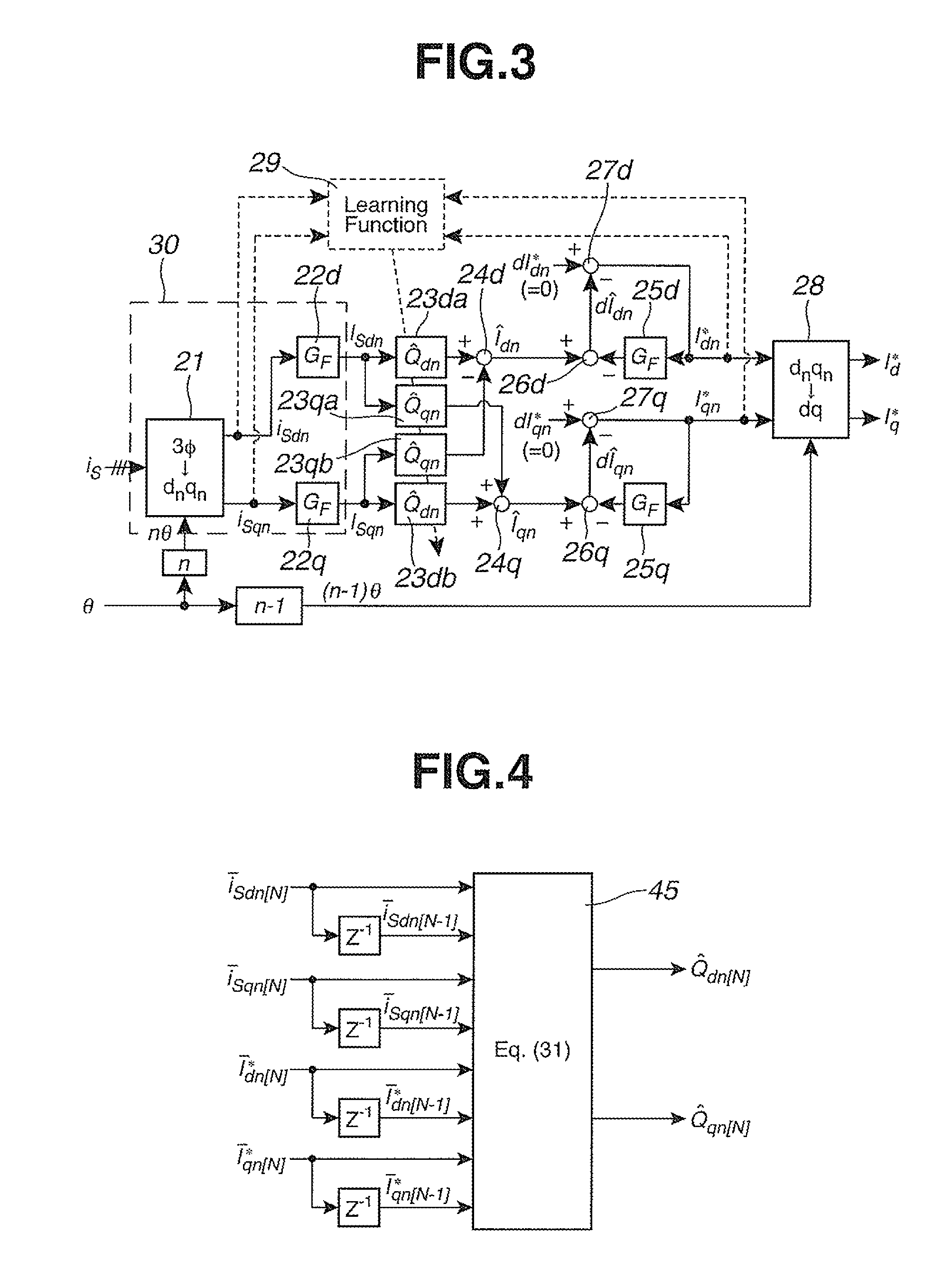Periodic external disturbance suppression control device
- Summary
- Abstract
- Description
- Claims
- Application Information
AI Technical Summary
Benefits of technology
Problems solved by technology
Method used
Image
Examples
embodiment 1
[0078]The learning control explained in a first embodiment (correction control of inverse model Q̂n following condition change of the real system) is auxiliary function intended to prevent degradation of control performance and destabilization of the periodic disturbance observer 12. Therefore, this learning control does not require high speed calculation as compared to the control period or cycle of the harmonic suppression control. For example, the learning control period TL is set at TL=20 [ms] (50 Hz system fundamental period), as compared to the calculation period Ts of the periodic disturbance observer 12 set at Ts=100 [μs], in consideration of the calculation load of harmonic vector loci.
[0079]Next, the explanation is directed to a method of estimating a transfer characteristic Pn of the real system at the learning control period TL. The transfer characteristic Pn of the real system in the first embodiment is a n-th order component (n is an arbitrary order) of the frequency t...
embodiment 2
[0093]In the first embodiment, the pulsation frequency component ISn extracted through LPF GF(s) of the expression (2) is substituted, as the harmonic sensed current, into the inverse model estimating equation (21) in the N-th sample, d axis and q axis n-th order harmonic. A response delay is involved in LPF GF(s), and therefore, the estimation of the expression (21) is delayed with respect to the variation of transfer characteristic Pn of the real system. Therefore, the second embodiment uses an average harmonic current i−Sn in the learning control period TL as expressed by an expression (22), as the harmonic current detection technique for the learning control.
[Math.20]i_Sn[N]=i_Sdn[N]+ji_Sqn[N]=1TL∫t-TLtiSdn(t)t+j1TL∫t-TLtiSqn(t)t(22)
[0094]Since the learning control period TL is set as TL=20 [ms] while the control period Ts of the periodic observer is Ts=100 [μs] under the condition of this description, for example, it is possible to determine the average value i−Sn in the learni...
embodiment 3
[0106]When the denominator becomes equal to zero in the inverse model estimating expression (31) of the second embodiment, for example, the calculation becomes unfeasible in the form of division by zero. Therefore, the third embodiment employs means for preventing division by zero in the control system of the first embodiment or the second embodiment.
[0107]In the following explanation, the expression (31) of the second embodiment is taken as an example. The denominator in the expression (31) is expressed by a following equation (den: denominator).
[Math. 30]
den=(īSdn[N]−īSdn[N-1])2+(īSqn[N]−īSqn[N-1])2 (32)
[0108]The denominator den is expressed by the differences during one sample interval of the d axis component and the q axis component in the average value of the harmonic sensed current in. Therefore, when the variation of the harmonic sensed current iSn during one sample interval of the learning control period TL becomes zero, then the denominator den becomes equal to zero.
[0109...
PUM
 Login to View More
Login to View More Abstract
Description
Claims
Application Information
 Login to View More
Login to View More - R&D
- Intellectual Property
- Life Sciences
- Materials
- Tech Scout
- Unparalleled Data Quality
- Higher Quality Content
- 60% Fewer Hallucinations
Browse by: Latest US Patents, China's latest patents, Technical Efficacy Thesaurus, Application Domain, Technology Topic, Popular Technical Reports.
© 2025 PatSnap. All rights reserved.Legal|Privacy policy|Modern Slavery Act Transparency Statement|Sitemap|About US| Contact US: help@patsnap.com



